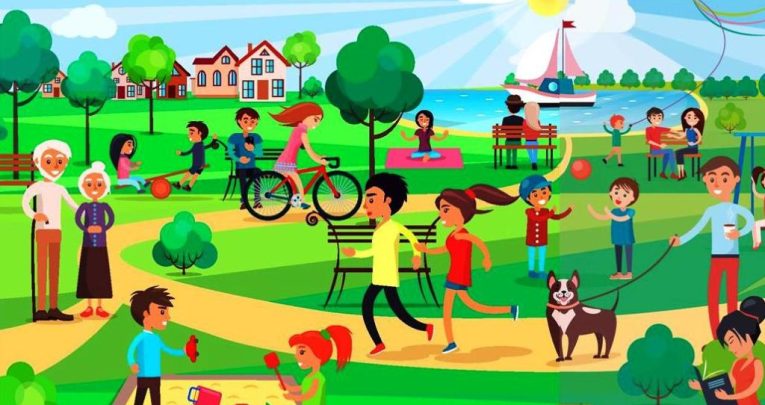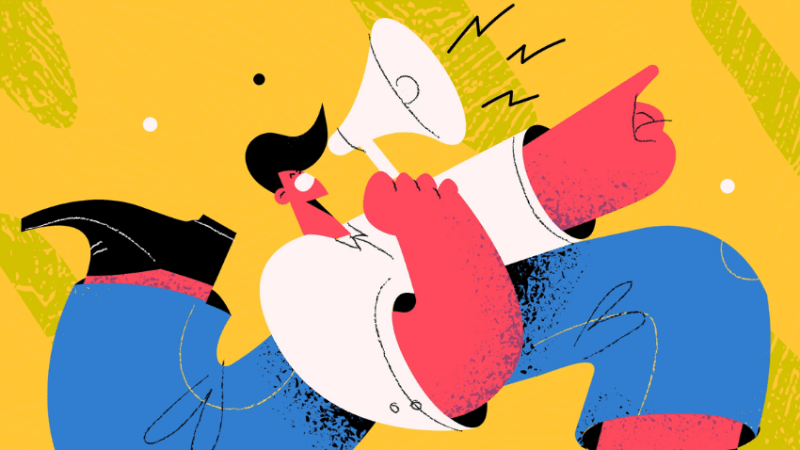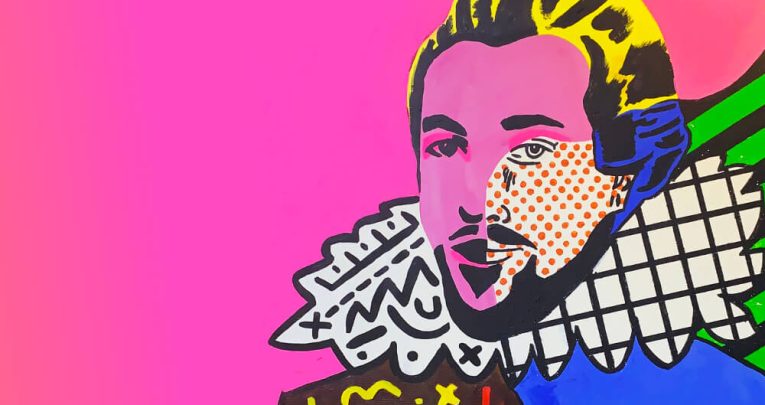Teach grammar using pictures

Nouns, prepositions, even the subjunctive; they can all be found in the right images, says Rachel Clarke. Best of all, they’re great for struggling readers…

- by Rachel Clarke
- Experienced educator, consultant and writer specialising in primary English Visit website

Many of us use pictures to stimulate creative writing. They’re great for helping pupils to visualise a scene; they don’t exclude children who lack confidence with reading and frequently the same picture can be used with children across the age and ability range – something that is much harder to achieve with written texts. But have you ever thought of using pictures to teach grammar?
If you type ‘busy pictures’ into Google, you won’t break the internet, instead you’ll be rewarded with dozens of action-packed images ideal for use in the classroom, many of which can be used to teach an incredible range of grammar skills.
Nouns and noun phrases
In the first instance, busy pictures offer children the opportunity to name nouns. This is particularly useful for the youngest children, but also for those learning to speak English as an additional language.
So, if using the picture above, you could ask children to record what can be seen, eg kite, sun, children, etc. When asking them to do this, you’re almost certainly going to ask them to identify the determiners (eg a, the, some, two, etc) that specify the people, places and things in the picture, and this is the first step in building noun phrases.
By asking children to note the appearance of objects in the picture, their simple noun phrases can be expanded to include descriptive detail eg old couple; a purple blanket; a large, brown dog.
And should you be looking for children to work on expanded noun phrases with additional information after the noun, you could even help them to note the yacht with pink sails; the happy man holding a coffee; and, the bright yellow sun in the sky etc.
Sentence types
Talking and writing about what can be seen in a busy picture also enables children to practise sentence writing. By raising their awareness of question words (who, where, when, why, which, how) and by encouraging them to ask each other what they can see in the picture, they can practise saying and writing questions eg What colour are the old lady’s shoes? What is floating in the sky? How many children are playing on the see-saw?
The most natural response to asking a question is to receive an answer and when children do this, they practise saying and writing statements eg The old lady’s shoes are red…There is a kite floating in the sky… There are two children on the see-saw.
Prepositions
Locating what can be seen in a busy picture requires children to understand and use prepositions.
If looking at the image above with your class, you or the children could devise clues to help each other find points of interest, eg What is the lady on the purple rug doing? Who is behind the girl on the bike? Who is sitting next to the see-saw?
Verbs and verb forms
If I said to my class that the dog is being taken for a walk by the man in red trousers; that the kite is being flown in the sky; and that the red bike is being ridden by a girl wearing a pink dress, they would, I hope, note that I’d used the passive voice.
And as I’d made my observations using the present tense form of the passive voice, I could then ask them to rewrite my observations in the past tense form of the passive voice eg the kite was being flown in the sky… the red bike was being ridden by a girl wearing a pink dress.
Try teaching these images
It’s not just busy pictures that can be used to teach grammar. Any image that enables detailed description of what can be seen will facilitate learning about noun phrases. Likewise, images portraying action lend themselves well to learning about verb forms.
Trending
Take a picture, such as the one shown here, and ask children to explore what may have happened by using modal verbs and adverbs of possibility eg:
- There could have been an explosion
- There may have been an earthquake
- It’s unlikely this was planned.
They should then use their observations to reach a probable conclusion about what has happened.
Pictures of famous cities and landmarks provide further ways to learn and apply grammar. First off, there is the opportunity to describe what can be seen, which reinforces that all-important skill of using capital letters to denote proper nouns.
This picture also offers another opportunity to use conditional structures such as ‘If I went to London, I would like to go on the London Eye’, and subjunctive sentences such as ‘I would like to travel in a hot air balloon if I were to visit London’.
There is also sufficient detail in the busy picture for me to elicit my class’s opinions about what they would do if they were to visit the depicted scene, eg I would play on the see-saw if I went to this park… If I went to this park, I would like to sail on the yacht.
By encouraging children to think about what they would do if they visited this park, I am asking for speculative, hypothetical responses and so I’ve encouraged my class to use conditional if clauses (and of course I’ve achieved the added bonus of their sentences using subordinating conjunctions).
By asking my class to speculate and hypothesise, I can also use the busy picture to practise the trickiest of all tricky grammatical forms: the subjunctive.
It’s not much of a leap from ‘I would play on the see-saw if I went to this park’ to ‘I would play on the see-saw if I were to visit this park’ or from ‘If I went to this park, I would like to sail on the yacht’ to ‘If I were to go to this park, I would like to sail on the yacht.’
In summary, busy pictures are an incredible grammatical teaching resource; so go on, type the words ‘busy picture’ into Google and see what you get.
Rachel Clarke is director of Primary English and a former deputy head and local authority English advisor.







